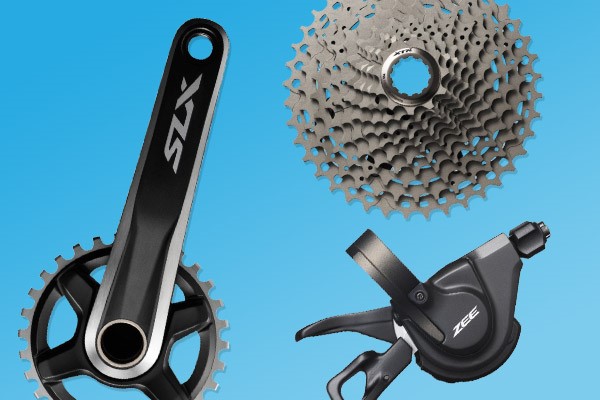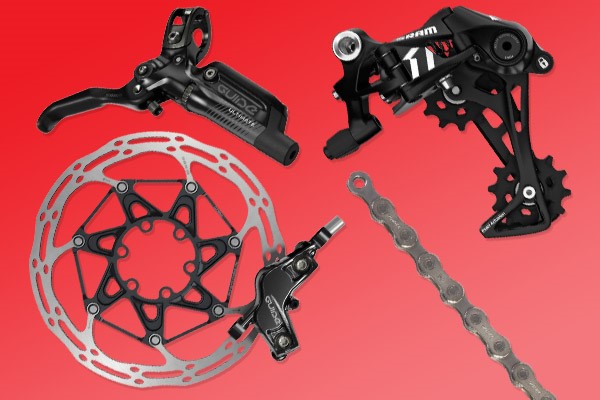Mountain Bike Groupsets
Mountain bike groupsets have evolved significantly in the last 20 years, and are now truly set apart from their road bike counterparts. With a focus on strength and gear range, it reflects the demands of mountain bikers out there and the extremes in which they ride.
With big moves towards 1x setups which use one chainring in the front and a large cassette in the rear, MTB groupsets have become simpler to use and maintain.
With improved reliability and performance, clutch-style rear derailleurs maintain the tension in the chain, working alongside narrow-wide chainrings making sure there is a greater grip on the chain's individual links, making dropped chains a thing of the past.
Shimano now has 12 speed featuring on all groupsets above and including Deore, while SRAM's 12 speed Eagle system is now part of all groupsets above and including SX.
Disc brakes have become the standard form of stopping for mountain bikes, cable operated (or mechanical) disc brakes are now less common, the majority now use more powerful hydraulic disc brakes.
Shimano MTB Groupsets
Shimano’s mountain bike groupsets offer particular reliability and robust performance in all kinds of conditions, whether it’s their race level XTR groupset or their more modest Deore. The beauty of Shimano’s groupset hierarchy is that no matter where you get in, you’ll be getting fantastic performance with little to no drawbacks. Deore is the Shimano's lowest performance-level groupset, now offering 12 speeds in 1x and 11 in 2x configurations. Deore, SLX, XT and XTR all offer 12 speed options.
Shimano works on a trickle-down system, where the top end groupsets get the best materials and technologies, and over the years the technologies trickle down to the lower tiers of groupsets. Shimano first introduced 12 speed to their XTR groupset, and since then their new XT drivetrain has gotten an extra gear, as well as on the SLX and Deore level. This also happened with Di2, Shimano’s electronic drivetrain system. It was first debuted in MTB on the XTR Di2 (M9050) groupset and has since been developed for XT. All groupsets also feature Shadow RD+ clutch style rear derailleurs. These drastically reduce chains dropping by maintaining chain tension. The clutch is adjustable too, to tailor for different riding preferences.
Shimano MTB groupsets all get corresponding hydraulic disc brakes with 2 or 4-piston calipers. They use Shimano Mineral oil as fluid, and the levers have Servo Wave action that ramps up braking power by increasing leverage.

|
Mountain Bike Groupsets | ||
|---|---|---|---|
| Name | Price | Features | Performance |
 |
5 | Electronic 11 speed, 1x/2x options |
|
 |
4.5 | 12 speed
1x/2x options |
|
 |
4.5 | Electronic
11 speed 1x/2x options |
|
 |
4 | 12 speed 1x/2x options |
|
 |
3 | 12 speed
1x/2x options |
|
 |
2 | 1x 12 speed,
2x 11 speed, 2x 10 speed |
|
SRAM MTB Groupsets
SRAM MTB groupsets were the first to introduce a 1x specific drivetrain with a wide range 11 speed cassette, taking the front derailleur out of the equation. This was generally seen as a vast improvement and a defining moment in the evolution of the mountain bike drivetrain.
SRAM’s modern mountain bike groupsets started with the introduction of their XX1 drivetrain, establishing the first single chainring-specific groupset outside of downhill racing. They avoided the need for a front derailleur by using a wide range cassette that extended both the smallest gear to 10T and the largest to 42T, which was possible due to the new XD driver freehub body. What else made the 1x groupset possible was the new X-Sync chainring, which varied the chainring’s tooth profile to retain greater grip on the chain, and the Type 2 clutch, which maintained the chain tension. Both of these technologies exponentially improved the risk of dropped chains.
Since the introduction of XX1, SRAM has continued to push innovation and allow trickle-down technology. SRAM now have their fantastic 12 speed Eagle technology on multiple groupsets.
Eagle groupset technology was first introduced in Flagship XX1 and XO1. It has since been extended into the GX, NX and now the new SX groupset, offering a more budget friendly option. With 12 speeds, SRAM was able to offer a huge 10-50/52T cassette, giving a range of over 500%, which is greater than many 2x drivetrains.
SRAM does not offer groupset-specific brakesets. The SRAM Level brakes have a 2-piston caliper and are aimed at cross country and trail riders. Their more powerful Guide brakes have a 4-piston caliper and can be used from trail riding, to enduro and even light downhill, while the Code brakes are the most powerful from SRAM, for DH and enduro riders.

|
Mountain Bike Groupsets |
||
|---|---|---|---|
| Name | Price | Features | Performance |

AXS Eagle 
|
5 | 1x 12 speed with electronic AXS option | |

AXS Eagle 
Eagle |
4.5 | 1x 12 speed with electronic AXS option | |

Eagle |
4 | 1x12 speed | |
 Eagle |
3 | 1x12 speed | |

Eagle |
2 | 1x12 speed | |
Rear Mech
Also known as derailleurs, modern MTB rear mech's use a powerful clutch mechanism to maintain constant tension on the chain, this reduces chain slap and noise as well as helping to keep the chain tight on the chainring. This has made a dropped chain almost a thing of the past. The clutch can be disabled making maintenance and wheel removal easier.
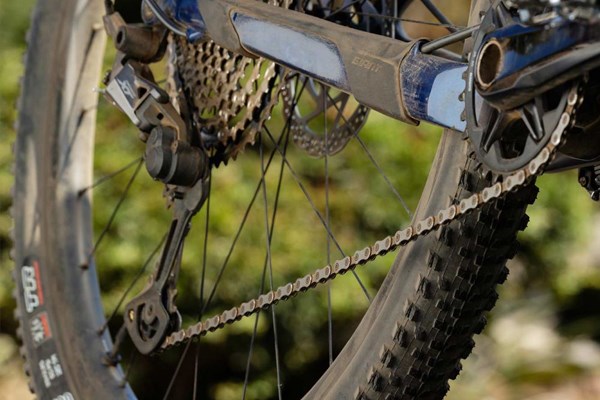
Cassette
With 1x drivetrains benefiting from reduced weight and maintenance, a wide-range cassette gives the range that was previously offered by a 2x set up. Cassettes are available in different sizes, for example, an 11t to 42t cassette has cogs that range from the small 11t to the large 42t. Cassettes are now available above 50t, with increased price comes faster shifting and considerably less weight. There are three standards of freehub bodies used for different types of cassette. Shimano's new Microspline for their 12-speed cassettes, SRAM's XD freehub for any cassette that uses a cog smaller than 11t, and the long-established HG body for cassettes up to 11 speed with an 11t smallest cog.

Shifter
A rear derailleur is useless without a shifter. The best units allow multiple shifts either up or down with one long throw of the lever. While an upgrade of your rear mech will improve shifting, reduce weight and improve chain retention, an upgraded shifter will increase shifting efficiency and ease of use to get the most from the mech. Shifters can attach to the bars with a band-on clamp or can integrate into the brake lever clamp. The brake lever and shifter must use the same clamp-type to be compatible. SRAM have their Matchmaker system, while Shimano uses I-Spec, the newest being I-Spec EV type.
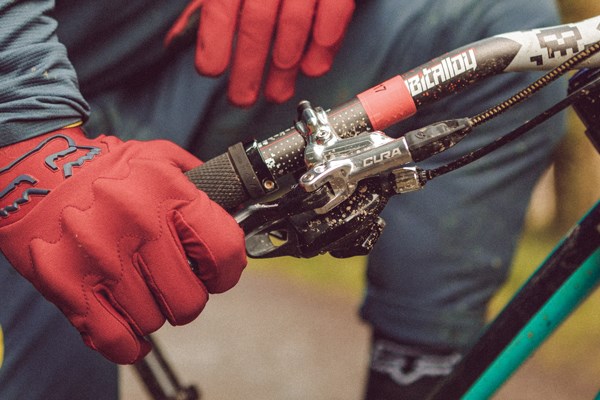
Chainset
The powerhouse of any groupset, the chainset includes both crank arms along with the chainring, though not all cranks include a chainring from new. You are directly connected to your cranks through your pedals, a stiff and light crankset will improve feel on the trail. There are various types of chainring attachment, chainline, and different sizes of the internal spindle to fit inside the bottom bracket bearings. For example, an MTB with a boost 148mm rear axle and a Shimano bottom bracket will need a chainset with a straight 24mm spindle and a 55mm chainline.
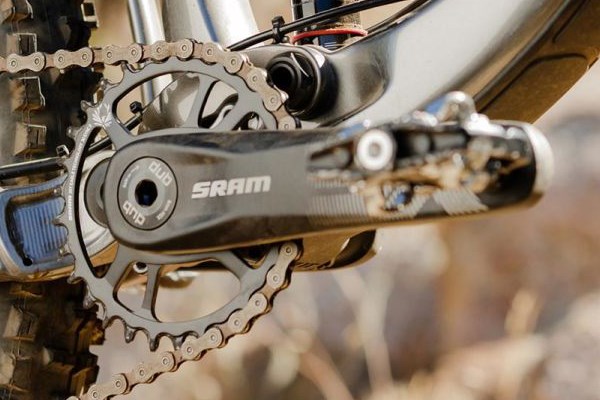
Bottom Bracket
The bottom bracket houses the bearings that help your cranks spin freely. There are many different types, depending on the bottom bracket and fitment type of your bike. There are threaded bottom brackets that screw into the frame, along with press fit BB's that press into the frame, similar to a headset. Cartridge bearings support the crankset spindle and must be compatible with that spindle diameter.
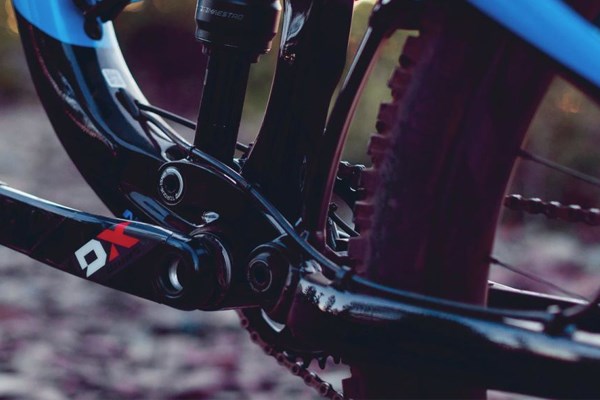
Shimano v SRAM Comparison chart

|

| |
|---|---|---|
| Professional | 11  |
12  AXS Eagle 12  AXS Eagle |
12  |
11 
11 
|
|
11  |
||
| Enthusiast | 12  |
|
11  |
10 
|
|
10  |
11 
|
|
| Entry | 9  |
12  Eagle |
9  |
9-10  |
|
9  |
9-10  |
|
7  |
7-10 
|
Downhill MTB Groupsets
Built for the rigours of the DH circuit, downhill groupsets focus on strength and reliability above weight savings. Because there is no need to point the bikes uphill, a wider range cassette is not necessary. A single chainring is all that’s needed upfront. As there is no great range of gearing, derailleurs can be small, away from the danger of striking rocks and roots on the trail.
Shimano DH Groupsets
The Zee groupset is the entry-level Shimano gravity drivetrain, aimed at riders that don’t need all the exclusive features of the Saint group but want a robust and dependable drivetrain. The Zee M640 groupset comes with a similar Shadow RD+ rear derailleur, yet does not have the lighter Hollowtech II chainset. The shifters too are slightly different. The Saint shifter allows for a double upshift, while the Zee only allows for a single upshift.

|
Downhill MTB Groupsets |
||
|---|---|---|---|
| Name | Price | Features | Performance |
 |
4 | 1x 10, bespoke brakes | |
 |
2.5 | 1x 10, bespoke brakes | |
Both Zee and Saint groupsets have powerful disc brakes to match. The callipers on both Zee and Saint are the same 4-piston design, which offers massive single-finger stopping power. The levers differ, with the Saint sharing much with the XTR brake lever. The Zee lever design is similar to the SLX brake, allowing for a more budget-friendly price point. Both brakes feature Servo Wave technology for greater leverage.
SRAM DH Groupsets
The XO1 DH was the first offering by SRAM, which extended to the more affordable GX DH groupset shortly after. SRAM bucked the trend of more gears, feeling that downhill riders seldom use as many as other mountain bikers. So, instead of pushing for 11 speeds, they offered a new 7-speed option. The reasoning behind this was that riders were often double or triple shifting, trying to find the correct gear, seven gears were deemed ideal. What makes the 7-speed cassette interesting is the Block X-Dome design, which takes up the extra room on the freehub with a domed piece of aluminium.
Carrying over from the XX1 and XO1 drivetrains, the derailleurs feature a clutch to maintain chain tension and reduce dropped chains and noise, while the X-Horizon parallelogram design allows for crisp shifts. On the XO1 DH cassette, a SRAM XD Driver freehub is necessary, whereas the GX DH takes the regular splined freehub body. The XD driver allows for a smaller 10T cog to be used, widening the gear range.

|
Downhill MTB Groupsets |
||
|---|---|---|---|
| Name | Price | Features | Performance |
 |
4.5 | 1 x 7 speed | |
 |
4 | 1 x 7 speed | |
Unlike Shimano, SRAM does not have groupset specific brake options, but rather offer their Code downhill brakeset in a few different variants depending on budget. They also feature a 4-piston design for huge braking power thanks in part to the SwingLink™ technology that boosts leverage.
Shimano Hybrid Groupsets
Hybrid groupsets are often a mix between road and mountain bike components. Some are from mountain biking, like Deore, SLX and XT, while others find their way from road. The Sora, Tiagra and Ultegra groupsets all offer flat handlebar shifters that work perfectly for hybrid bikes and offer the higher gear ratios of road bikes. The more entry-level bikes use Altus, Acera and Alivio providing solid performance that doesn’t break the bank.
The city/urban specific drivetrains from Shimano are Nexus, Alfine and Metrea. The first two are internal hub drivetrains, housing the gears inside the rear wheel and not needing a derailleur. They range from 3-11 speeds and the Alfine even comes in electronic Di2 form. The Metrea groupset is Shimano's dedicated hybrid 11-speed groupset and even comes with its own disc brake set.
Frequently Asked Questions
Both perform excellently. Both are used at a professional level. Generally, riders tend to prefer either SRAM or Shimano.
A groupset includes all gearing parts along with brakes in most cases.
Yes, an upgraded groupset will perform better, save weight and be more efficient.
Most MTB'ers prefer 1x now that wide range cassettes are commonplace. The simplicity and chain retention out-perform 2x set-ups.
Both perform well. Shimano XT is one step down from their top tier XTR, while SRAM GX is two steps down from their top tier XX1.
While amateur riders will use a 30 or 32t chainring, most athletes will use a larger 34 tooth chainring.

